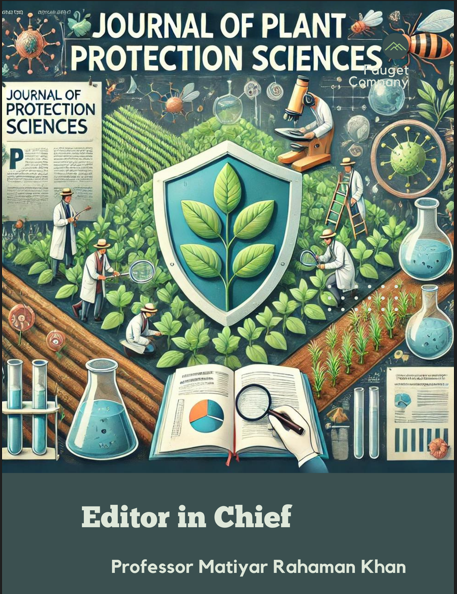Population dynamics of major insect pests and their natural enemies on cabbage under new alluvial zone of West Bengal
DOI:
https://doi.org/10.48165/Keywords:
Population dynamics, Plutella, natural enemies, cabbageAbstract
Population dynamics of major insect pests and their natural enemies on cabbage were studied at Bidhan Chandra Krishi Viswavidyalaya (BCKV), Kalyani, West Bengal(India) during rabi season of 2011-12 and 2012-13. Experi ment was laid out in Randomized Block Design with three replications. Cabbage (cv Rareball) seedlings were transplanted in the plot of 9 m2area with 45cm x 45cm spacing. Observation was recorded at weekly interval from randomly selected five plants /plot. Peak population of diamond back moth (DBM) was recorded on 1st March and 23rd February with13.60 and 14.33 larvae /plant during 2011-12 and 2012-13 respectively. Cabbage aphid reached its peak on 9th February (14.17 aphids/inch2leaf) and 16th February (11.03 aphids/inch2leaf) of 2011-12 and 2012- 13, respectively. Highest parasitized larvae of diamond back moth by Cotesia plutellae were found on 15th and 8th March with 10.42 and 10.50% larval parasitisation during both the seasons, respectively, whereas maximum coc cinellid was observed on 23rd February of 2011-12 and 2012-13 crop seasons with 11.67 and 9.67 coccinellids/ 5plants, respectively. Both maximum and minimum temperature had major role to build up the population of dia mond back moth, C. plutellae and coccinellids beetle while aphid population was enhanced only by maximum tem perature. Relative humidity and rainfall had negative influence on pests and natural enemies during the study pe riod.
References
Anonymous. 2011 Indian Horticulture Database, Na-
tional Horticulture Board, Ministry of Agricul-
ture, Government of India, 85, Institutional
Area, Sector-18, Gurgaon-122015, India, 141p.
Arshad Ali Rana KS. 2012 A survey of aphidophagous
ladybeetles at some districts of Western Uttar
Pradesh. Bionotes 14: 21.
Ashfaq M Iqbal J Ali A Farooq U. 2007 Role of abiotic
factors in population fluctuation of aphids on
wheat. Pakistan Entomology 29:117-22.
Aslam M Razaq M Ahmad F Mirza YH. 2007 Popula-
tion abundance of aphids (Brevicoryne brassi-
cae L. and Lipaphis erysimi Kalt.) on Indian
mustard (Brassica juncea L.). Proceedings
African Crop Science Conference 8: 935-38.
Bhat AM Hussain B Dar HM. 2012 Population dynam-
ics and infestation index of cabbage aphid,
Brevicoryne brassicae [Homoptera: Aphidi-
dae] in Kashmir Valley. Trends in Biosciences
5: 284-86.

